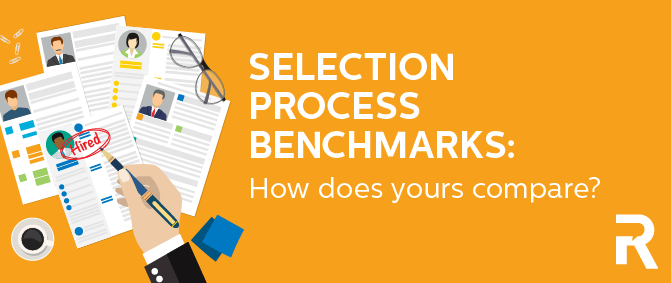
How does your candidate selection process compare to other organizations’?
If you don’t know the answer, it’s in your best interest to find out. Along with revealing whether or not your selection process is practical and strategic, answering this question will expose opportunities for improving your recruiting process.
SHRM recently published two reports on recruitment and selection process benchmarks based on data from nearly two thousand HR professionals. Here is the key benchmark data from the reports, and what it means for your selection process:
Key Facts:
Key Takeaways: Because most companies conduct phone screenings, the majority of today’s candidates are expecting them. And that’s good news for you, because phone screenings are usually easier to schedule and shorter to conduct than in-person interviews—allowing you to meet with more candidates faster and reduce your time-to-fill. On the other hand, if you strategically conduct in-person interviews without an initial phone screen, you can stand out from the typical interview process. Bringing candidates into your workplace right away can help you make a unique first impression and establish meaningful connections more quickly.
Key Facts:
Key Takeaways: Today’s average time-to-fill is alarming because it has doubled in the past two years (based on 2014 data from ERE Media). But with the job market tightening, it’s not surprising that filling positions is becoming a more time-consuming task. Fortunately, companies can decrease their time-to-fill by building and maintaining a talent community. Once you have a pipeline of qualified candidates, you can proactively recruit to fill your positions faster.
Key Facts:
Key Takeaways: If most of the job offers you extend to candidates are accepted, your company is on the right track. As long as you remain competitive in the labor market, you should be able to maintain your high acceptance rates. But if many of your candidates aren’t accepting your offers, you may want to reevaluate your recruiting process and tactics. Try emphasizing different employment benefits when communicating with candidates, or see what happens if someone in a different role extends the verbal employment offer.
Key Facts:
Key Takeaways: Considering that larger companies have more employees to promote and transfer, it’s not surprising that they fill more positions internally. This can be a huge advantage mainly because internal hires already understand the business and fit the company culture. If your organization wants to increase its internal hire rates, offer more opportunities for career mobility by encouraging employees to make lateral job moves. If you’re more concerned with hiring externally, leverage employment brand marketing to increase your reach so that more people outside of your organization hear about the job opportunities within your organization.
So, how does your selection process compare? If your practices differ from the average organization’s, think about the reasons why. This way, you can evaluate whether your process is most likely to drive the results you want.